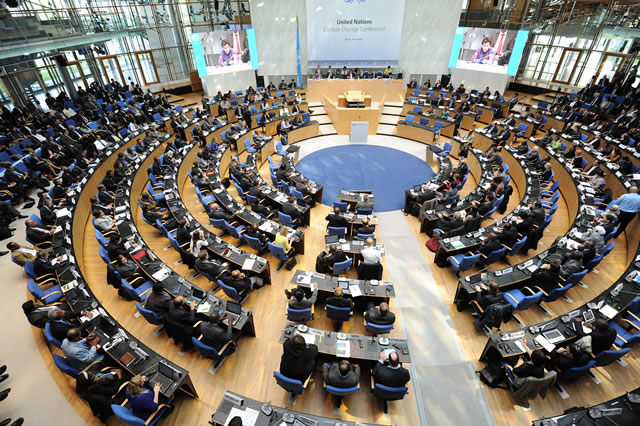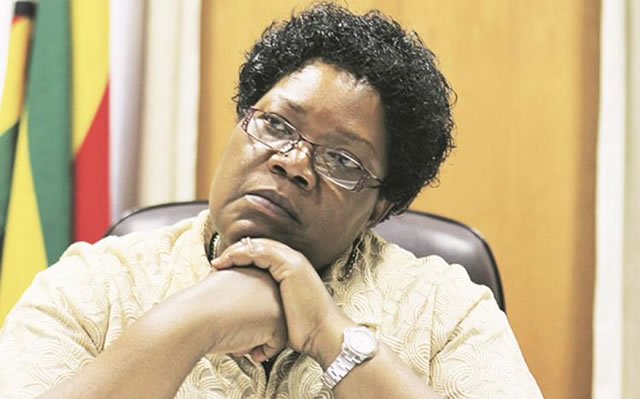Global climate talks slowly sinking on US’ inaction

Jeffry Gogo Climate Story
THE big daddy of carbon pollution, the United States of America, last week released details of how it plans to reduce greenhouse gas emissions, as part of its contribution towards a new global climate change agreement to be sealed at Paris in December.It was nothing unexpected. The US reiterated its already inadequate position as announced last November, promising to cut emissions by between 26 and 28 percent by 2025, compared to 2005 levels.
Most of the reductions will be achieved by tightening existing laws in the energy industry, targeting power plants, oil and gas production as well as in the transport and construction sectors.
Effectively, the US will reduce emissions by just 16 percent below 1990 levels, the base year.
The Americans were silent on finance and technology transfer, two important issues for Africa and other countries in the developing world.
As the March 31 first deadline for intended nationally determined contributions (INDCs) expired, only four other countries — Russia, Norway, Switzerland, Mexico—and the 28-member European Union had formally submitted their mitigation plans to the UN.
The INDCs — national strategies for curbing emissions — are what will shape a new global climate deal to replace the Kyoto Protocol, which expired in 2012.
Other countries are not expected to release their proposals until after the winter. Russia, another major emitter, plans to reduce emissions by up to 70 percent, and the EU by 40 percent, both below 1990 levels, by 2030.
Just How Important Are US’ Mitigation Plans?
Except for Russia, all INDCs to have been released so far are only “medium” rated and incompatible with meeting the global target of capping temperature rise at 2 degrees Celsius, according to the latest Climate Action Tracker, which measures the “fairness” of governments’ climate action.
There was just so much expected from the US, and justifiably so, yet it disappointed. Together with China, the US accounts for 50 percent of total global emissions.
The targets were weak and off track from meeting up with science’s demands for holding warming below 2 degrees Celsius. Higher pledges from the US were conditional to influencing fellow high-emitting countries like China, India, Japan and Canada to making comparable efforts.
Now, it is unlikely these governments will take on deeper cuts. The Canadas and Australias of this world have long expressed their opposition to reducing GHG by any significant margins while the Chinas and the Indias have been waiting to take cue from the Americans.
The US’ proposals have particularly frustrated chances of a good deal at Paris, and trashed the concept of fairness. Africa considers it fair that those who have made a bigger contribution to the problem of climate change, or have a higher capability to act, should do more.
That’s not what the US is doing. By remaining silent on finance and technology transfer, the US has set a dangerous precedent, a kick in the face for those who are expecting industrialised nations to assist with adaptation, by all means possible.
As the world’s biggest economy, the US has missed a chance to play a leading role in building a better future for the world, and in helping smaller economies adapt to climate change, tackle poverty and grow sustainably.
The message from the Republican-controlled Congress is equally uncomforting. There is no guarantee the US will commit to an internationally binding climate agreement, as the Obama administration has tried to do with the INDCs. Republicans are threatening to withdraw in favour of self-regulation.
“Considering that two-thirds of the US federal government hasn’t even signed off on the Clean Power Plan and 13 states have already pledged to fight it, our international partners should proceed with caution before entering into a binding, unattainable deal,” Senate Majority Leader Mitch McConnell was quoted as saying by Reuters last week.
Sinking Ground
With the US’ attitude, chances for a strong climate agreement come December are increasingly growing thin. Already marred by deep issues of distrust between rich and poor nations, the ground on which the multi-lateral climate talks stand is sinking.
And that will be costly. “We would like to send a clear message that the cost of inaction is high and will become even higher if we do not act immediately and resolutely,” Mr Washington Zhakata, director for climate change in the Ministry of Environment, Water and Climate said in a statement on March 23.
“In the last three decades, floods, droughts and wildfires have taken a huge toll on lives and caused massive economic losses,” he said, adding “mitigating and adapting to them remains among the great challenges and tests of our time.”
The US’ plan does little to avert or confront these possible disasters in Zimbabwe, or anywhere else. The civil society is bitter.
“This is a proposal for more drought, more devastated fish stocks, and more wars over water. The US proposal is an ingredient in a recipe for disaster,” said Meena Raman, negotiations expert at Third World Network.
But as the US tinkers on inaction, neglecting historical responsibility, Zimbabwe is building its INDCs around renewable energy.
Mr Zhakata said “our greatest potential is in solar power, hydro-power, geothermal and a little bit of wind energy.”
The details are still to be finalised, but this is what Zimbabwe, whose past and present emissions will not register on the global radar, will table as its contribution for mitigating climate change at the UN talks in the French capital in December.
God is faithful.
[email protected] <mailto:[email protected]>










Comments